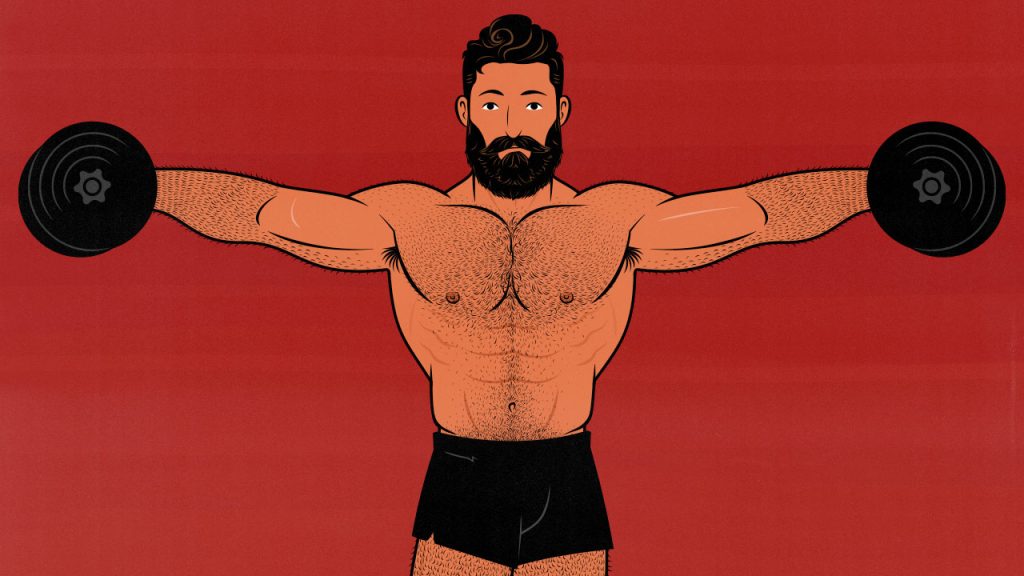
The Best Shoulder Exercises (For Your Front, Side & Rear Delts)
Your shoulders are made up of three different heads—the front delts, side delts, and rear delts. Each head moves your shoulders in a different direction, so each needs a different type of exercise. You need a mix of pressing exercises, lateral raises, and pulling exercises.
In this guide, we’ll go over the best deltoid exercises for each head and then combine them together into a balanced shoulder workout.
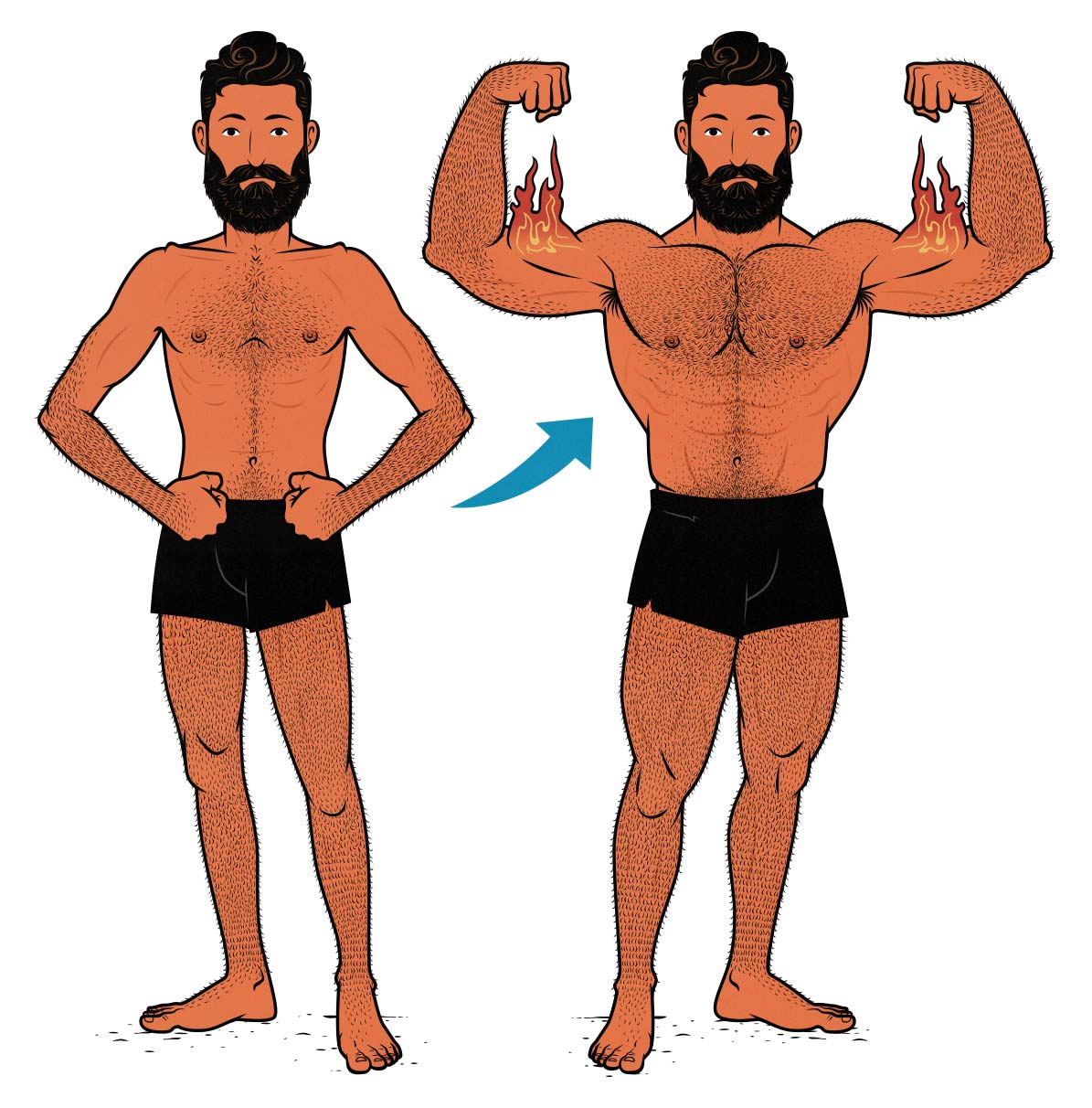
How to Train Your Deltoids
Before we can talk about the best deltoid exercises, it helps to understand what your shoulder muscles do. There are three different deltoid heads, each responsible for different movements:
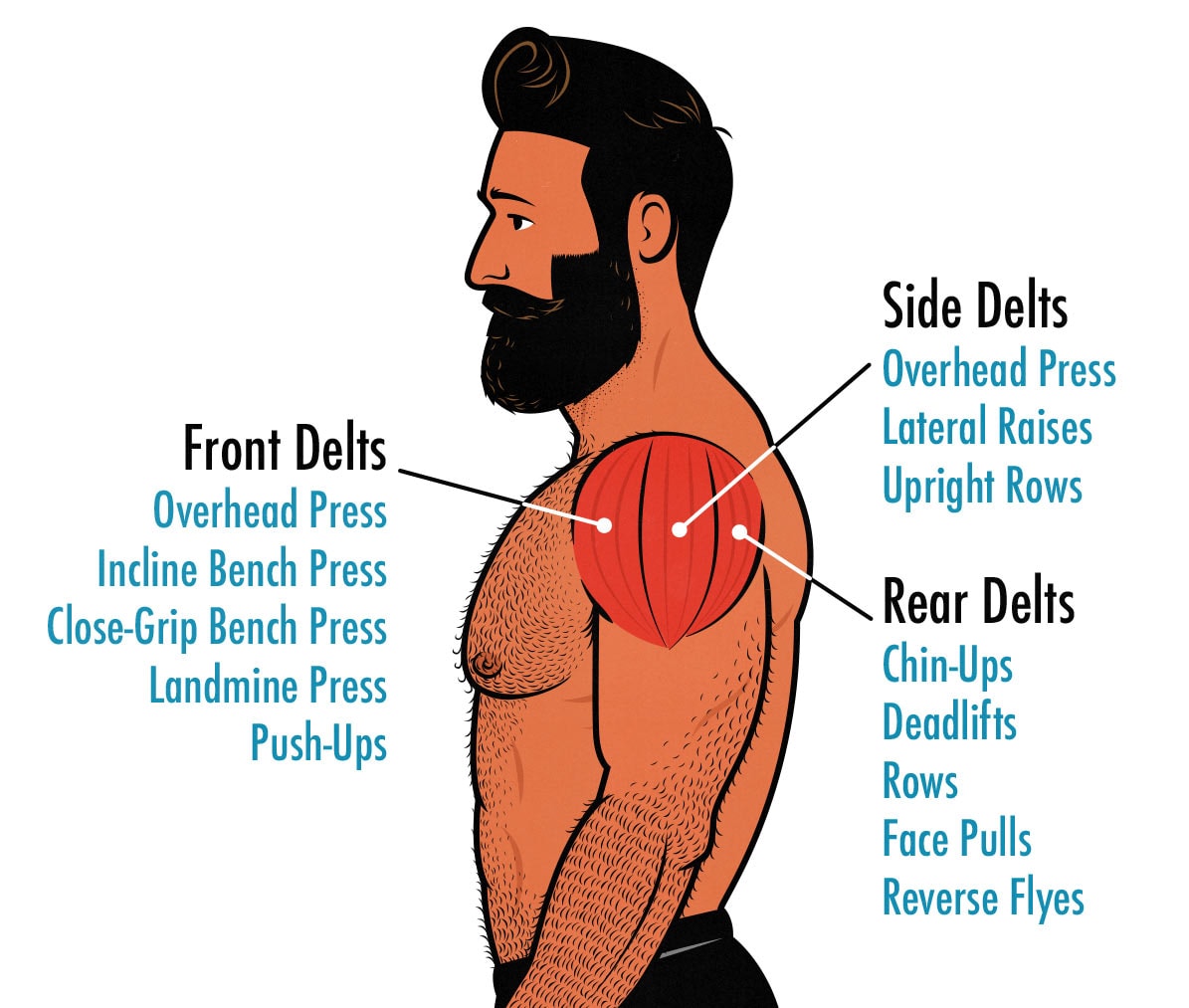
- Your front delts are trained with pressing movements, such as the overhead press, giving you bigger shoulders.
- Your side delts can be trained by raising your arms out to the sides, like with the lateral raise, giving you broader shoulders.
- Your rear delts can be trained by pulling exercises, such as the barbell row, giving you rounder shoulders.
In the rest of this article, we’ll dive deeper into the details, talking about all of the best exercise variations, set and rep schemes, and shoulder workouts. But keep in mind that the best shoulder exercises will always be variations of pressing exercises, lateral raises, and pulling exercises.
The Best Front Delt Exercises
The front delts are the biggest part of your shoulders, and they’re involved in quite a few compound exercises, ranging from push-ups to the bench press to the overhead press. In EMG research, the overhead press shows the highest muscle activation (study).
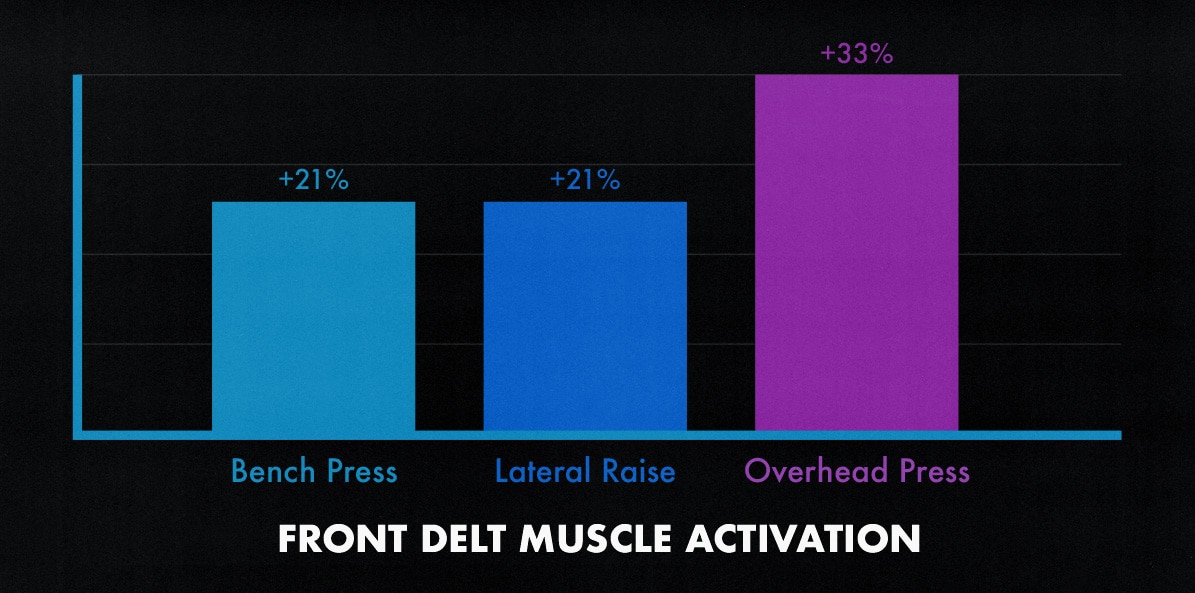
However, EMG research favours exercises that are hardest at the top, whereas our muscles grow best from exercises that are hardest at the bottom (research breakdown). So, we need to factor in the strength curve, too. Push-ups and bench presses are more challenging at the bottom of the range of motion, so I suspect they’re similarly good for building bigger front delts.
The Overhead Press
The classic “military” overhead press is done with a barbell, standing on your feet. It’s a big compound lift that works your front delts, side delts, triceps, traps, upper chest, serratus, and abs.
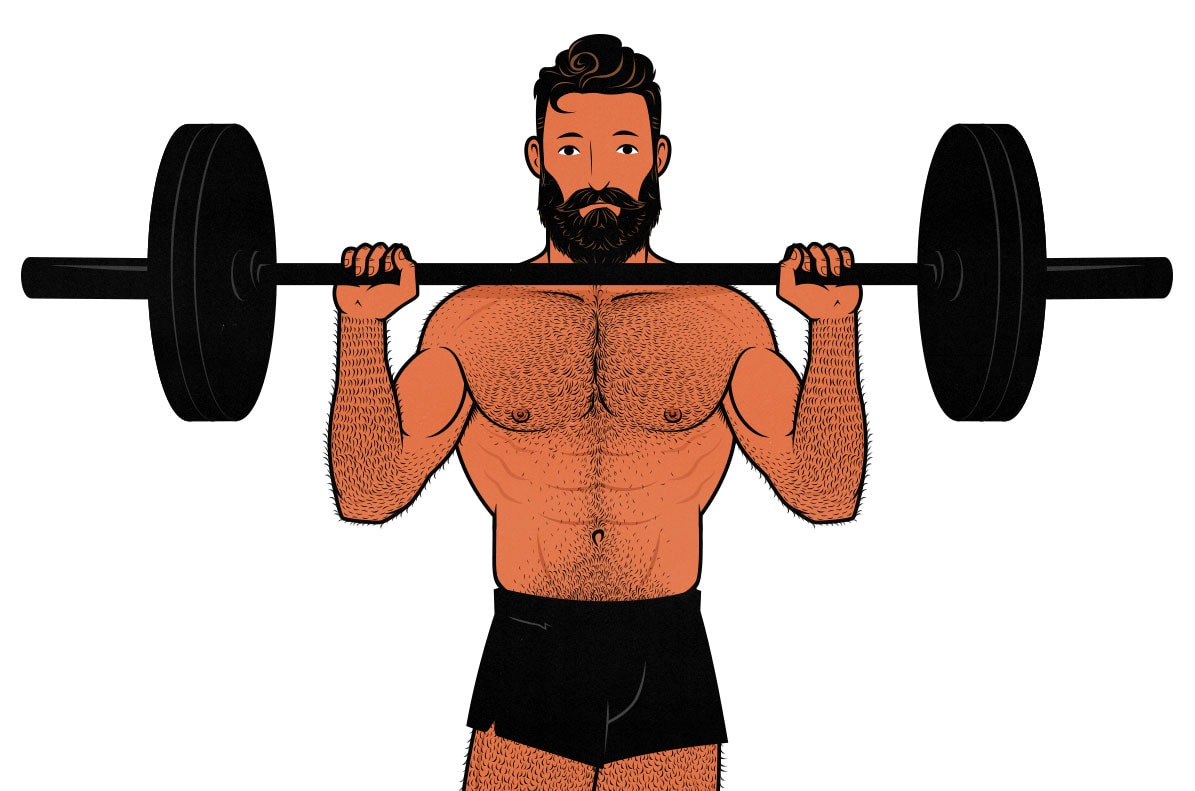
The overhead press is an advanced exercise that requires great shoulder mobility and stability. If you can’t do it, feel free to use dumbbells or exercise machines. You don’t even need to do the overhead press at all. Feel free to do the other exercises instead.
Push-Ups & Dips
Push-ups are an amazing front delt exercise, especially if you use the classic shoulder-width hand position. It becomes even better if you raise your hands on push-up handles or weight plates, doing deficit push-ups instead.
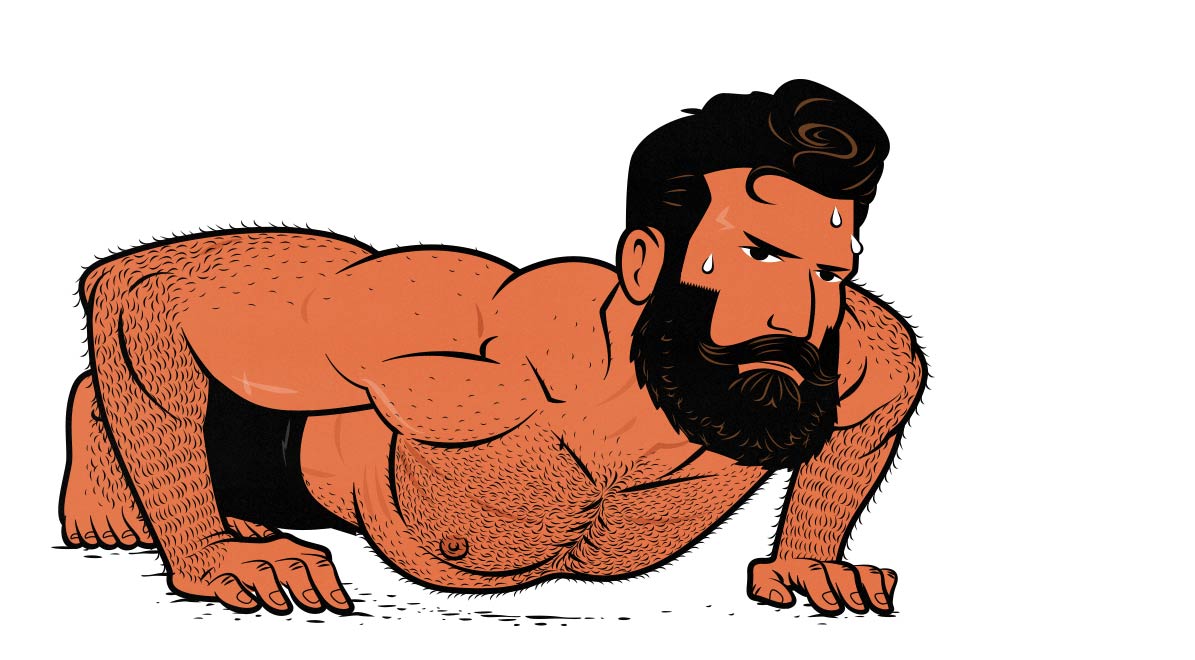
Dips can be fantastic for your shoulders, too. They train your front delts in the exact same way as push-ups, just through a larger range of motion. They’re harder than push-ups, but for many of us, that’s a good thing. Just make sure to lean forward, doing chest dips instead of triceps dips.
What makes push-ups and dips special is that, like when overhead pressing, your shoulder blades are free to move, working your serratus anterior muscles. This makes them pair beautifully with overhead presses.
Bench Press & Incline Bench Press
The bench press is usually thought of as a chest exercise, and if you’re lifting lighter weights with a wider grip, that can certainly be true. But if you’re lifting fairly heavy with a moderate or close grip, your front delts should be forced to fully engage.
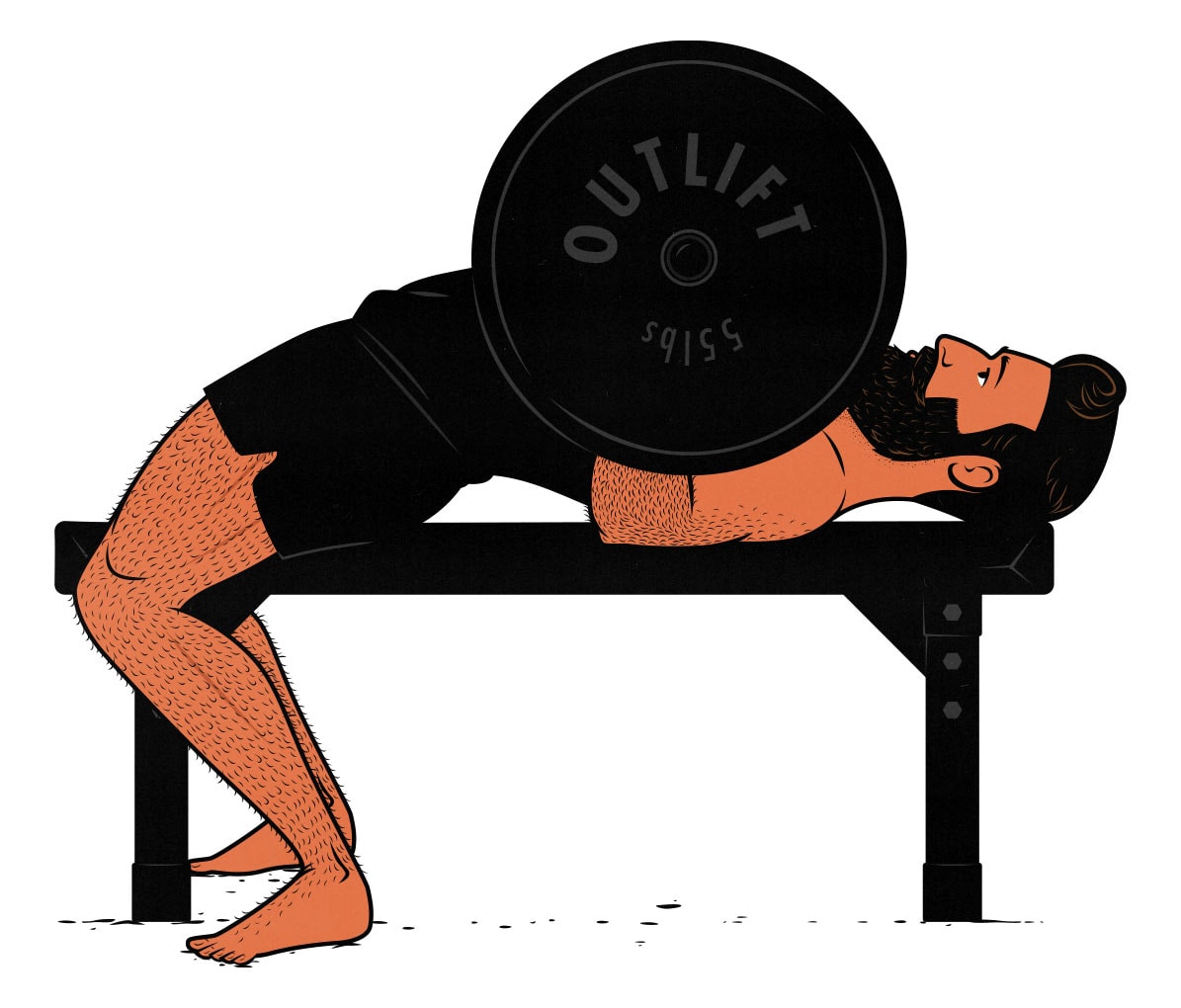
If the flat bench press isn’t cutting it, you can use an incline bench. The common rule of thumb is to use lower inclines to focus on your upper chest and higher inclines to focus on your front delts. Everyone is a bit different, so try a few angles and see which one feels best for your shoulders.
The Landmine Press
When Marco was coaching professional and Olympic athletes, the landmine press was one of his go-to exercises for improving shoulder strength, size, mobility, and stability. It’s also great for improving core strength.
The Best Side Delt Exercises
The side delts are the second biggest shoulder muscle. According to the EMG study we covered earlier, the overhead press and lateral raise are both amazing side-delt exercises.
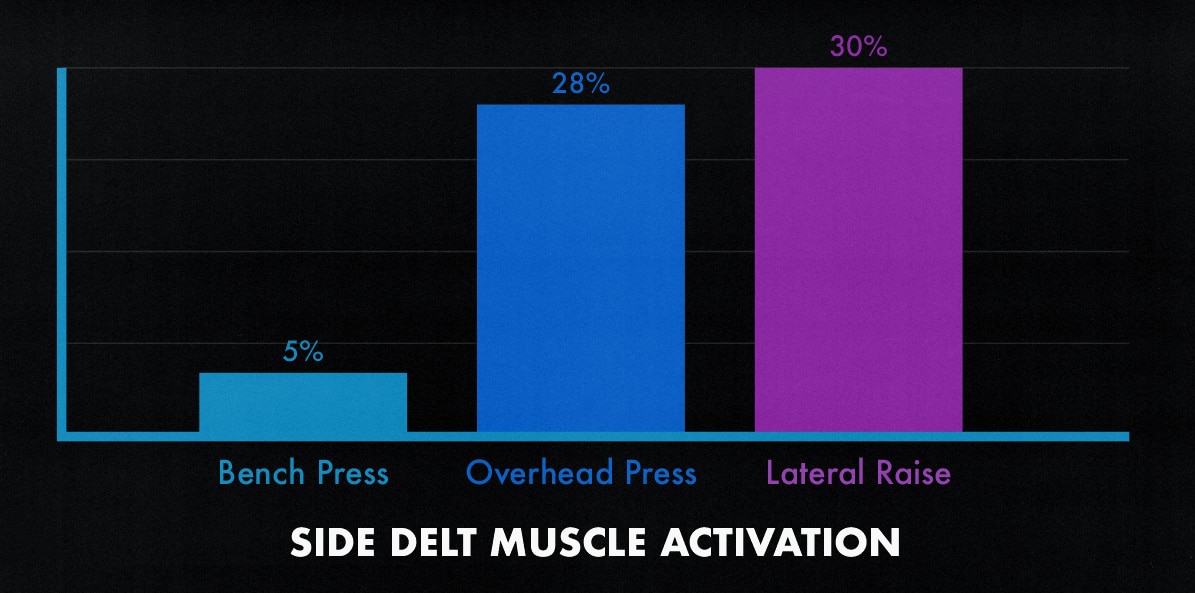
The only problem with the lateral raise is that the strength curve isn’t great. The lift is easy at the bottom of the range of motion and difficult at the top. It would be better if the strength curve were the other way around. Fortunately, there are two good solutions.
Standing Lateral Raises
Standing lateral raises are a classic shoulder exercise. Bodybuilders have been using them for decades to build broader shoulders. They work your side delts, upper traps, and forearm extensors.
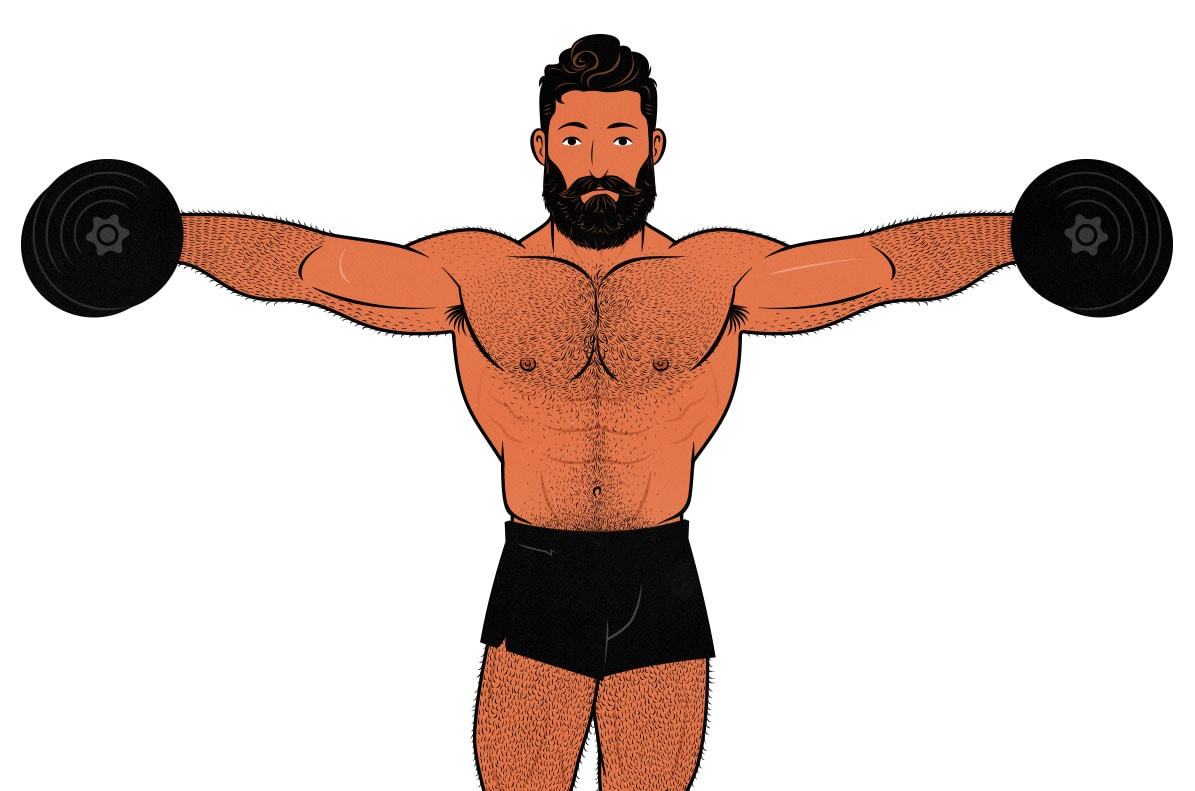
However, as we mentioned earlier, they’re too easy at the bottom. That doesn’t mean the exercise is bad, just that you need to lift more explosively. Try to accelerate the weight through the bottom of the range of motion. Explode it up, lower it back down slowly, and then explode it back up again before the tension dissipates.
This lifting tempo works well for almost every lift, but it works especially well for shoulder exercises. Try to lift explosively when doing your overhead presses, lateral raises, and rear delt flyes. For a deeper dive, we have a full article on lifting tempo.
If you’re having trouble working your side delts hard enough to tire them out or get them sore, or if you’re having trouble making progress from week to week, try doing more sets. The quickest way to do that is to add in drop sets.
Lying/Lounging Lateral Raises
The other way to fix the strength curve of lateral raises is to lie or lounge on your side. This makes it so that the bottom of the range of motion is disproportionately hard. That’s perfect for stimulating muscle growth. You’ll feel the difference right away. Your side delts will feel sorer from fewer sets.
If you don’t want to lie down on a bench, you could stand next to a cable stack with the cable set up around waist height.
Upright Rows
Upright rows have been under siege for several years now. They’re a perfectly good shoulder exercise, but not everyone’s shoulder joints are well-suited for it, earning them a terrible reputation among fitness fearmongers.
When you do the overhead press, your shoulders are externally rotated. With lateral raises, they’re in a neutral position. When you do upright rows, your shoulders are internally rotated. The fear is that lifting with internally rotated shoulders causes shoulder impingement.
A better way of thinking about it is that excessive stress with insufficient recovery leads to overuse issues. If upright rows hurt your shoulders, that’s a bad sign, so either adjust your form or choose a different exercise variation. If upright rows feel good, you should be okay.
The Best Rear Delt Exercises
The rear delts are the smallest of your shoulder muscles, and just like the front delts, they’re worked quite hard by big compound exercises. The difference is that while our front delts are worked hardest by pressing exercises, our rear delts are worked hardest by pulling exercises. They’re trained by lateral raises, too.
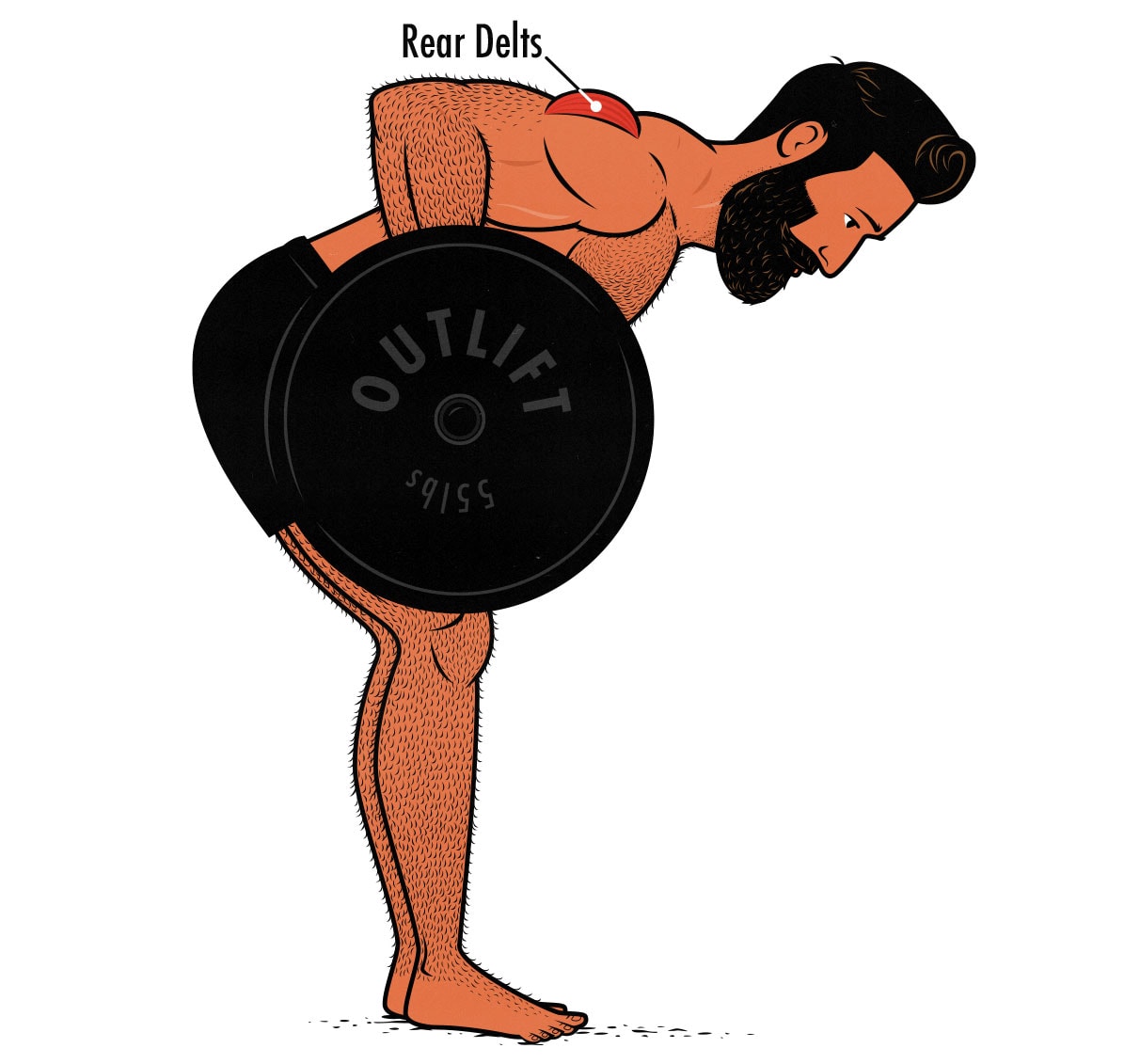
If your workout program includes chin-ups, pull-ups, rows, deadlifts, and lateral raises, then your rear delts probably won’t need any extra attention. But if they never get sore or seem to be lagging behind, you can train them directly by adding in face pulls or reverse flyes.
Here’s how to choose the best rear delt exercise:
- Barbell rows are one of the best exercises for your rear delts. To work your rear delts proportionally harder, use a wider grip and row the barbell to your sternum.
- Chin-ups also work our rear delts, although typically slightly less than barbell rows, putting more emphasis on your lats and traps instead. Still, they give your rear delts extra work.
- Face-pulls are an amazing lift for working your rear delts and external rotators, which can help you build muscle and improve your posture.
- The rear-delt fly is a great isolation lift for your rear delts. Your mid traps will be worked as well, but your rear delts will be your limiting factor, so they’ll get the majority of the growth stimulus.
How Many Reps to Do
Most research shows that doing anywhere from 4–40 repetitions per set will stimulate muscle growth. The lower end of that range stimulates less muscle growth per set, whereas the higher end is excruciatingly painful.
The easiest and most efficient way to stimulate muscle growth, then, is to do around 6–20 reps per set (research breakdown).
Where this gets tricky is that different shoulder exercises benefit from a slightly different rep range:
- The Bench Press: 5–8 reps. If you do fewer than 5 reps, you’ll need to do more sets. If you do more than 8 reps, your shoulders may not need to work as hard. The chest seems to do proportionally more of the work.
- The Overhead Press: 5–12 reps. The overhead press is always a great shoulder exercise. The reason we’re keeping the reps lower is that this is a big compound exercise that can quickly tire you out, especially since you need to tense your entire body throughout the entire set.
- Lateral Raises: 8–30 reps. Doing 30 reps per set is usually quite painful, but with an isolation exercise as small as this one, that pain is manageable. Plus, doing more reps per set encourages your body to build more blood vessels leading to the area, improving your ability to build bigger shoulder muscles.
- Rows: 10–20 reps. Rows are the rare exercise that breaks the rules. They work best in higher rep ranges than you’d expect. I don’t know exactly why that is, but it’s something almost every lifter agrees on.
How Many Sets to Do
You should do around 3–8 sets per muscle per workout (research breakdown) and train each muscle 2–4 times per week (research breakdown). Where this gets tricky is that your deltoids aren’t one single muscle. You need to 3–8 sets for your front delts, side delts, and rear delts.
For example, if you’re training your shoulders twice per week, you might do 7 sets for your front delts, 7 for your side delts, and 7 for your rear delts in both of those workouts. Maybe that’s 4 sets of the overhead press, 4 sets of rows, 3 sets of lateral raises, and 3 sets of reverse flyes.
The Shoulder Workout
We have another article about how to program a Shoulder Day workout. It has workouts ranging from minimalist to maximalist. But here’s a good default shoulder workout routine:
| EXERCISE | SETS | REPS |
|---|---|---|
| Overhead Press | 5 sets | 6-10 reps |
| Push-Ups | 4 sets | AMRAP |
| Lateral Raises | 4 sets | 12–15 reps |
| Overhead Extensions | 3 sets | 12–15 reps |
| Rear Delt Flyes | 3 sets | 12-15 reps |
Note that a balanced deltoid workout would include just as much pulling as pressing. However, shoulder workouts are usually done either right before or after a back workout, so those exercises are already taken care of.
Conclusion
The best exercises for building bigger deltoids are:
- Pushing exercises (like the overhead press) for your front delts.
- Lateral raises for your side delts.
- Pulling exercises (like rows) for your rear delts.
For example, if you use a 4-day push/pull workout split, you could train your front and side delts during your push workouts (with the overhead press, bench press, and lateral raise) and your rear delts during your pull workouts (with rows, chin-ups, and reverse flyes).

If you want a customizable workout program (and full guide) that builds these shoulder workouts into a full workout program, check out our Outlift Intermediate Bulking Program. Or, if you’re still skinny or skinny-fat, try our Bony to Beastly (men’s) program or Bony to Bombshell (women’s) program. If you liked this article, you’ll love our full programs.



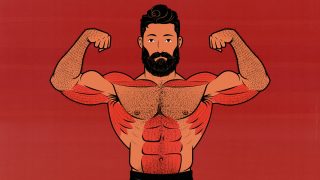
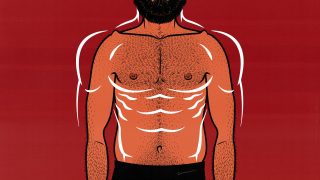
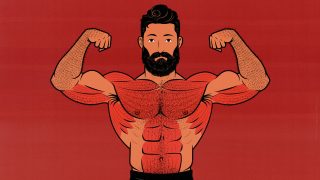
Hi Shane, it is interesting to know that deltoids are bigger than many apparently bigger muscles in the upper body.
Will you please elaborate on the criteria on which deltoids were compared with other muscles? For example, based on volume size maybe? Otherwise, lats are generally considered the largest muscle in the upper body based on its area, but lats are a thin layer actually.
Hey Farhan, yeah, you’ve got it exactly right. I’m talking about total volume, not just area. Our shoulders are the biggest muscles in our upper bodies, then our chests, then our lats, and then our triceps. (And our quads and glutes are way, way bigger than any of our upper body muscles.)
Thanks for sharing this, Shane. It appears quite surprising at first that many of bigger looking muscles are actually smaller than the smallest looking muscle.
Anyway, Shane, graphz on EMG in this article about middle deltoid activation show that lateral raises are only slightly better than overhead presses. I avoid lateral raises as they bother my shoulders. But I do lots of heavy overhead pressing. Will I get almost same level of middle deltoid development?
I think if you’re doing plenty of overhead pressing, it’s okay to skip out on the lateral raises. You can still build big shoulders. With that said, if you adjust your lateral raise technique, you can probably find a way of doing them without any shoulder pain. But you don’t need to. You’re right. Overhead pressing can be enough for both the front and side delts 🙂
Ok, Shane. I shall reconsider lateral raises with some technique adjustment. Thanks.
Sweet 🙂
And if they keep feeling bad on your shoulder joints, just yank them back out.
Shane, I’m looking forward to arm day to hear your ideas about that day. For now, I’m satisfied with the rest of the day, and I went ahead based on the plans of this site, and I’m satisfied with the results, and this was the most optimal thing for me.
Woot! Glad it’s working so well.
I’m working on Arm Day now, but I’ve got a couple of projects going at once, so it’ll take a little bit longer to publish than the others.